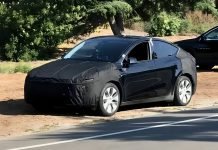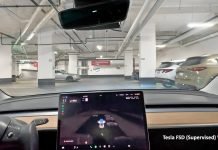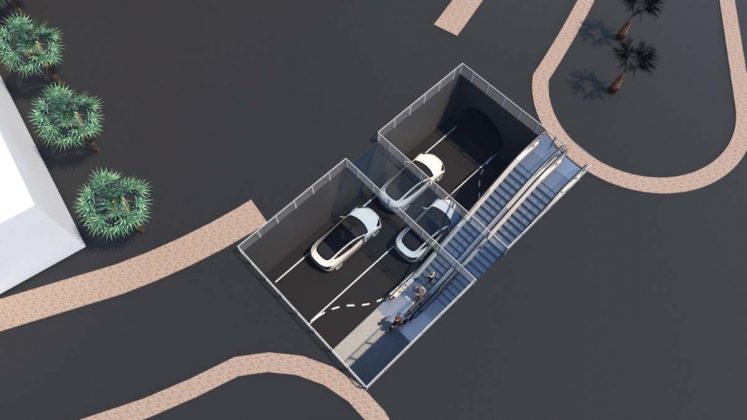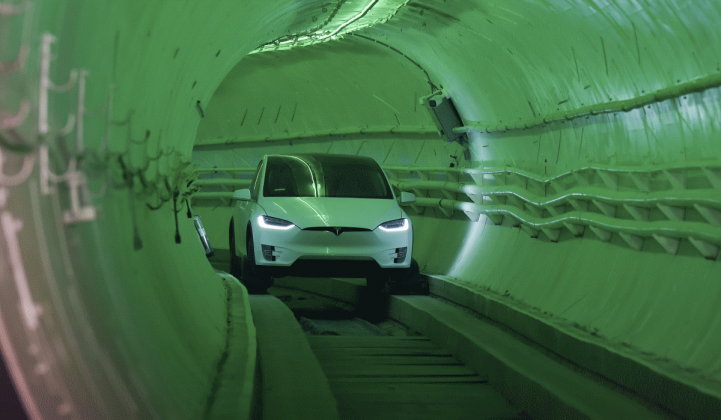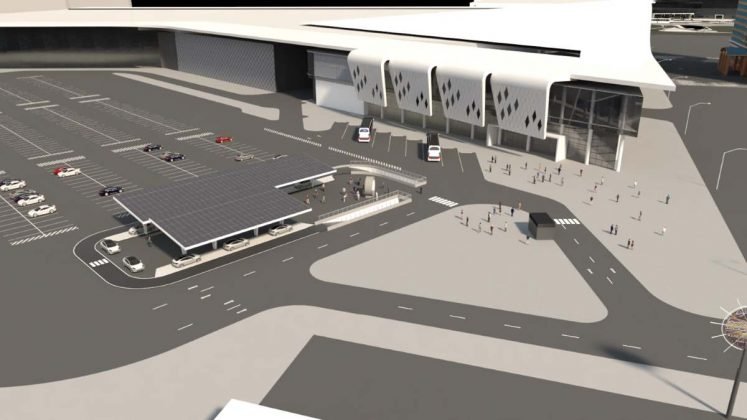With the huge number of automakers coming up on the market with their new models, be it electric vehicles or internal combustion vehicles, the volume of automobiles running on the road is increasing at an alarming rate. With the space on the roads remaining the same, there have been issues of the magnitude of traffic coming up in recent times. With this problem in mind, the Boring Company was founded by Elon Musk back in December 2016. The company takes up projects of constructing sub-surface tunnels and developing fully autonomous transportation systems in a bid to reduce traffic congestion on the roads. They currently have projects on their roster in Hawthorne (California), Las Vegas, Los Angeles, and on the East Coast, of which the Las Vegas project is just a few months away from being operational, according to Musk’s latest tweet.
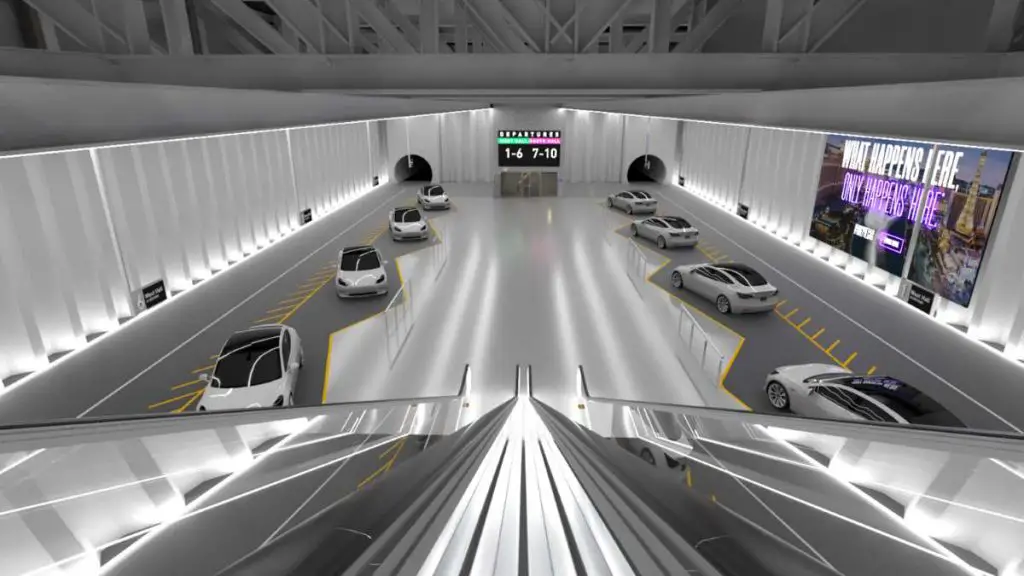
Boring Company Tunnel In Vegas Is A Few Months Away From Being Functional
The Boring Company’s first project was in Hawthorne, where they constructed a test tunnel. It is now being used for the research and development of the Loop and Hyperloop variants of the newer projects that they take up. The Los Angeles Convention Center needed a transportation system for its visitors, and the Boring Company placed a bid of $52.5 million on the project, which was accepted. With the construction having started in October 2019, the project reached the halfway stage by January 2020. Having finished the boring of the tunnels, the construction of the two above-ground stations at either end, along with the underground stations is underway. Along with this, the Vegas Loop is another project underway in Las Vegas. When finished, this project is set to reduce the traffic around the Strip in Vegas, which is the most visited destination by visitors in Sin City.
Boring Co tunnel in Vegas is only a few months from being operational
— Elon Musk (@elonmusk) August 28, 2020
The Vegas Loop
A Loop is a high-speed underground transportation system capable of transporting visitors from one location to another using autonomous electric vehicles (AEVs). The Vegas Loop runs from Fremont Street all the way to the McCarran Airport, passing many places of tourist attraction like the Bellagio, MGM, Luxor, Harrah’s and Flamingo Hotels. A typical drive from Fremont Street to Mandalay Bay takes up to 30 minutes in peak hours. The use of this Loop will reduce this time to just 3 minutes, as the speeds of this system are supposed to reach speeds of 155 miles per hour (250 kph). The Boring Company has decided that it will be using Tesla Model 3 and Model Y for this purpose. The modified chassis of these Teslas can hold up to 16 passengers in the sitting and standing position. The Las Vegas Convention Center (LVCC) Loop is a part of this Vegas Loop, and the company also plans to have extensions of the tunnels in the future, that will run to Los Angeles.
The Boring Company has listed the advantages of using tunnel transportation as:
- No surface noise and vibration.
- No lanes and barriers.
- Comfortable and convenient for passengers.
- Weatherproof.
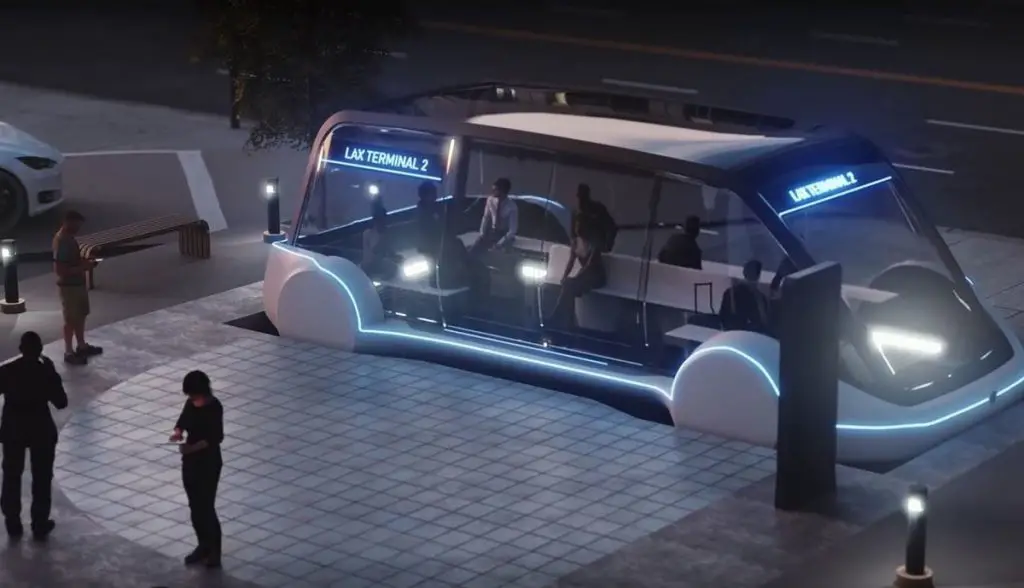
Earlier in July 2020, Elon Musk had shared the images of the stations that will be used in the LVCC project, which got a lot of appreciation from the general public. It would consist of a system similar to how a person books an Uber – the convention visitors will go to the station level on an escalator, wait for their car to arrive, and then hop in. The only difference is that the AEVs will travel at speeds that an Uber normally doesn’t – especially not in Vegas.
Other Boring Company Projects
The Hawthorne project, which was the Boring Company’s first project and is currently being used as a testing facility, is a 1.14-mile (1.83 km) route, near the SpaceX property on 120th Street. Completed in December 2018, it costs around $10 million. It is used for the research and development of the new technologies that they are manufacturing.
In Los Angeles, they are proposing a Dugout Loop, that will run a zero-emission, high-speed, underground public transportation system from various neighborhoods like Los Feliz, Rampart Village, and East Hollywood to the Dodger stadium. This project aims to transport baseball fans and concertgoers directly to the Stadium in under 4 minutes. It is estimated that this will take less than 14 months to be completed.
Another project that has been proposed by TBC will be on the East Coast, from Washington DC to Baltimore, which is a route of 35.3 miles (56.8 kms), running beneath the New York Avenue and Baltimore-Washington Parkway. This project will consist of two 12-foot inner diameter tunnels and will run completely beneath the surface, coming up only at the endpoints of the Loop. Extensions of this project will have several stations at various points on the route, and these stations will only be located on private land owned or leased by TBC. It is supposed to take 18 to 23 months to be completed.
The most interesting aspect of this initiative by The Boring Company is that these Loop tunnels that are being constructed are compatible with the Hyperloop technology, which TBC will be introducing in the coming years. The Hyperloop system will consist of autonomous electric pods capable of running at speeds as high as 600 miles per hour (965 kph), and passengers will be able to cover the distance from New York to Washington DC in 30 minutes roughly. The same distance today takes up to 4 hours by road.
The Loop technology will initially have human oversight – the completely autonomous system of an electric car rolling up to you guided by software and sensors will have to wait. As the Vegas Loop is the first public-facing project by the Boring Company, one that will be evaluated by other cities to understand their needs for a similar system, it will serve as a pioneer for American companies into the loop technology.




